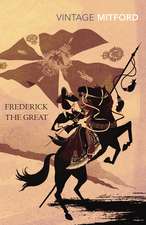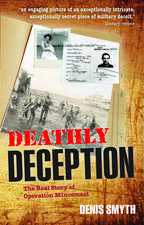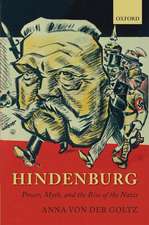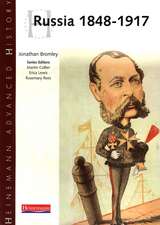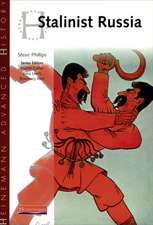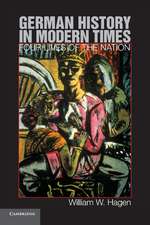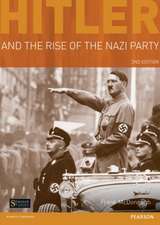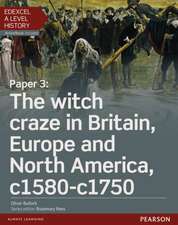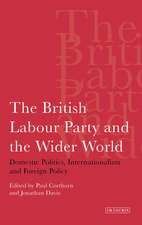Heinemann Advanced History: The Modernisation of Russia 1856-1985: Heinemann Advanced History
Autor John Laveren Limba Engleză Paperback – noi 2002
Preț: 219.37 lei
Nou
Puncte Express: 329
Preț estimativ în valută:
41.99€ • 45.63$ • 35.29£
41.99€ • 45.63$ • 35.29£
Carte disponibilă
Livrare economică 31 martie-14 aprilie
Livrare express 14-20 martie pentru 21.46 lei
Preluare comenzi: 021 569.72.76
Specificații
ISBN-13: 9780435327415
ISBN-10: 0435327410
Pagini: 176
Ilustrații: illustrations
Dimensiuni: 170 x 236 x 12 mm
Greutate: 0.3 kg
Ediția:1
Editura: Pearson Education
Colecția Heinemann Advanced History
Seria Heinemann Advanced History
Locul publicării:Oxford, United Kingdom
ISBN-10: 0435327410
Pagini: 176
Ilustrații: illustrations
Dimensiuni: 170 x 236 x 12 mm
Greutate: 0.3 kg
Ediția:1
Editura: Pearson Education
Colecția Heinemann Advanced History
Seria Heinemann Advanced History
Locul publicării:Oxford, United Kingdom
Cuprins
How to use this book
AS Section:
Narrative and Explanation 1 Tsarist Russia, 1856-1914 2 War and revolution, 1914-21 3 Stalin's USSR, 1921-53 4 Reform and stagnation, 1953-85
A2 Section:
Analysis and Interpretation Part 1: Tsarist and revolutionary Russia, 1856-1924 1 How significant were the reforms of Alexander II? 2 To what extent were movements for reform and revolution a threat to the tsarist regimes before 1905? 3 How significant was economic and social change in Russia before 1914? 4 How stable was the tsarist regime in 1914? 5 Why was Russia's performance in the First World War so disastrous? 6 Why were there two revolutions in Russia in 1917? 7 How and why did Lenin succeed in staying in power between 1917 and 1924?
Part 2: Stalinist Russia, 1924-53 1 How did Stalin become leader of the USSR by 1929? 2 How fundamentally was the USSR changed by the Stalinist revolution of 1928-41? 3 Why did a totalitarian regime develop in the USSR by 1941? 4 What impact did the war of 1941-5 have on the USSR? 5 What was the overall impact of Stalin on the development of the USSR?
Part 3: Post-Stalinist Russia, 1953-85 1 How successful a reformer was Khrushchev? 2 What was the extent of destalinisation? 3 Why was the period after Khrushchev a time of stagnation? 4 Why did the USSR eventually break up? 5 To what extent had Russia modernised btween 1856 and 1985?
A2 Assessment Select bibliography Index
AS Section:
Narrative and Explanation 1 Tsarist Russia, 1856-1914 2 War and revolution, 1914-21 3 Stalin's USSR, 1921-53 4 Reform and stagnation, 1953-85
A2 Section:
Analysis and Interpretation Part 1: Tsarist and revolutionary Russia, 1856-1924 1 How significant were the reforms of Alexander II? 2 To what extent were movements for reform and revolution a threat to the tsarist regimes before 1905? 3 How significant was economic and social change in Russia before 1914? 4 How stable was the tsarist regime in 1914? 5 Why was Russia's performance in the First World War so disastrous? 6 Why were there two revolutions in Russia in 1917? 7 How and why did Lenin succeed in staying in power between 1917 and 1924?
Part 2: Stalinist Russia, 1924-53 1 How did Stalin become leader of the USSR by 1929? 2 How fundamentally was the USSR changed by the Stalinist revolution of 1928-41? 3 Why did a totalitarian regime develop in the USSR by 1941? 4 What impact did the war of 1941-5 have on the USSR? 5 What was the overall impact of Stalin on the development of the USSR?
Part 3: Post-Stalinist Russia, 1953-85 1 How successful a reformer was Khrushchev? 2 What was the extent of destalinisation? 3 Why was the period after Khrushchev a time of stagnation? 4 Why did the USSR eventually break up? 5 To what extent had Russia modernised btween 1856 and 1985?
A2 Assessment Select bibliography Index













